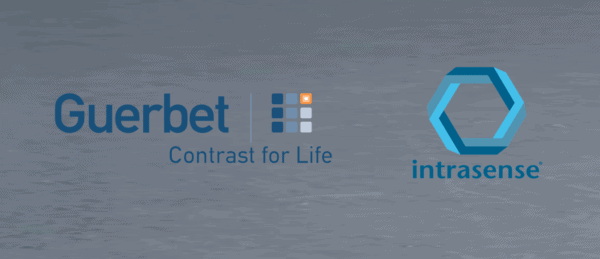|
Guerbet’s AI Platform Play | MRI Injury Predictions
January 12, 2023
|
|
|

|
|
Together with
|

|
|
|
“Can someone explain to me how the FDA considers two different AI software applications, built by different engineers at different companies, using different programming languages, different datasets and different weights on different use cases ….to be substantially equivalent?”
|
|
A valid question from Hardian Health’s Dr. Hugh Harvey.
|
|

|
|
Guerbet took a big step towards advancing its AI strategy, acquiring a 39% stake in French imaging software company Intrasense, and revealing ambitious future plans for their combined technologies.
Through Intrasense, Guerbet gains access to a visualization and AI platform and a team of AI integration experts to help bring its algorithms into clinical use. The tie-up could also create future platform and algorithm development opportunities, and the expansion of their technologies across Guerbet’s global installed base.
The €8.8M investment (€0.44/share, a 34% premium) could turn into a €22.5M acquisition, as Guerbet plans to file a voluntary tender offer for all remaining shares.
Even though Guerbet is a €700M company and Intrasense is relatively small (~€3.8M 2022 revenue, 67 employees on LinkedIn), this seems like a significant move given and Guerbet’s increasing emphasis on AI:
What Guerbet was lacking before now (especially since ending its Merative/IBM alliance) was a future AI platform – and Intrasense should help fill that void.
If Guerbet acquires Intrasense it would continue the recent AI consolidation wave, while adding contrast manufacturers to the growing list of previously-unexpected AI startup acquirers (joining imaging center networks, precision medicine analytics companies, and EHR analytics firms).
However, contrast manufacturers could play a much larger role in imaging AI going forward, considering the high priority that Bayer is placing on its Calantic AI platform.
The Takeaway
Guerbet has been promoting its AI ambitions for several years, and this week’s Intrasense investment suggests that the French contrast giant is ready to transition from developing algorithms to broadly deploying them. That would take a lot more work, but Guerbet’s scale and imaging expertise makes it worth keeping an eye on if you’re in the AI space.
|




|
|
MRI – Faster than ever before
Siemens Healthineers’ AI-powered MR image reconstruction technology, Deep Resolve, allows faster scans without compromising imaging resolution. Check out how Deep Resolve improves workflow efficiency and the patient experience, and view their portfolio of reconstructed scans here.
|
|
Riverain and the VA’s Precision Alliance
When the VA adopts your technology nationwide, you know you’ve been making an impact. That’s exactly what’s happening with Riverain Technologies’ ClearRead CT, which will be implemented across the VA Lung Precision Oncology Program (22 hub and 87 spoke locations).
|
|
- Predicting Athlete Reinjury: A team of Barcelona-based researchers found that certain MRI findings can predict which recovering professional athletes are most likely to be reinjured after returning to the field. Among 59 athletes with muscle injuries who underwent MRI within seven days of returning to play (9 who were re-injured), players with MRIs that featured two of five key findings had a far higher risk of future reinjury (OR: 29.58; Findings: connective tissue gap, loss of tendon tension, intermuscular oedema, callus gap and interstitial feather oedema).
- GE Acquires IMACTIS: Just days after its spinoff, GE HealthCare bolstered its interventional guidance capabilities by acquiring small French CT navigation company IMACTIS. The IMACTIS CT-Navigation system is already used to guide minimally invasive percutaneous procedures in the US and Europe, but will gain far wider exposure across GE’s global installed base, and could see future integrations with GE HealthCare’s other solutions. Perhaps not coincidentally, the last acquisition that GE HealthCare made (BK Medical, Sept 2021) also targeted procedural guidance.
- Volumes Up, Eye Gaze Down: As image interpretation volumes increase, radiologists’ image “gazing” coverage area declines. A new Journal of Digital Imaging study measured four radiologists’ eye gaze patterns while reading 400 chest X-rays with different lung abnormalities, finding that the rads’ lung area gaze coverage declined by between 1.3% and 7.6% for every 100 additional X-rays they read. This coverage reduction was consistent across all CXR abnormalities, ranging from 3.4% per 100 X-rays for cardiomegaly to 4.1% per 100 X-rays for atelectasis.
- Canon & Sclmage’s Hemo Alliance: Canon Medical Systems announced a strategic partnership with enterprise imaging company Sclmage, expanding Canon’s hemodynamics capabilities and its reach in the cardiac market. The alliance will combine Sclmage’s cloud-based platform with Canon Fysicon’s QMAPP Hemo hemodynamic monitoring system (used during interventional procedures), while allowing the companies to develop new solutions and business models.
- CXR & EMR AI Lung Cancer Detection: A new study in JAMA detailed an AI model that was able to accurately identify patients who are at high-risk for lung cancer by analyzing routine CXRs and EMR data. Analysis of 14k smoking patients (2.4% with lung cancer in 6yrs) found that patients who were flagged by both the study’s CXR-LC AI model and CMS lung cancer screening criteria and patients who were only flagged by the AI model had higher six-year lung cancer rates than patients who were only deemed eligible by CMS criteria (8.5% & 3.3% vs. 2.8%).
- Physician-Peer Relationships: Patients whose PCP and specialists trained together in medical school report substantially improved experiences. A Harvard-led analysis of 8.6k patient ratings revealed that “co-training ties” between specialists and PCPs were linked to a 9 percentage point increase in the patients’ specialist rating, which suggests there are potentially large gains from developing physician-peer relationships.
- Seno’s OA/US Performance: A new AJR study showed that Seno Medical’s opto-acoustic/ultrasound technology and AI decision support tool can significantly improve specificity for differentiating malignant and benign breast masses. The retrospective study had 15 readers review images from 480 patients (480 masses, 300 benign), finding that at 98% sensitivity the fused OA/US system produced far higher specificity compared to conventional ultrasound alone (47.2% vs. 38.2%).
- Rock Health’s 2022 Recap: Rock Health’s final 2022 digital health funding analysis confirmed that last year was indeed a “downhill ride,” as a drastic decline in late-stage rounds reduced total US digital health funding to $15.3B (vs. 2021’s $29.1B). Imaging was well represented in 2022’s funding, as cardiac CT AI company Cleerly scored one of the largest rounds ($223M), and two of the six most-funded clinical indications involved imaging (cardiovascular #2, oncology #3). If you’re interested in this story, check out our full writeup in Digital Health Wire.
- TTE’s High and Variable Costs: A new JACE study revealed that self-pay and commercial rates for transthoracic echocardiography (TTE) are substantially higher than Medicare rates — and they can vary widely. Analysis of 1.9k hospitals’ posted rates revealed that the median commercial and self-pay rates for TTE exams are roughly three-times Medicare ($1,313 & $1,422 vs. $464). Meanwhile, 90th percentile rates were 2.8-times higher than 10th percentile rates when comparing different plans within the same hospital, and 2.5-times higher when comparing different hospitals in the same regions.
- Overlooked AI Bias: An editorial in STAT News took aim at one of the publication’s favorite topics: medical AI bias. The analysis of 518 FDA-approved AI products found that very few submissions provided data on key sources of bias (devices, patient cohorts, clinical sites, annotators), then urged the FDA to require far more transparency into AI models’ training data and performance with different patient groups, as well as to strengthen its oversight of already-cleared AI models.
- Uncovering Incidental Cardiac Amyloidosis: A new study examined 17.3k bone scintigraphy exams from 11.5k patients (both cardiac & non-cardiac referrals) and found that 3.3% of them showed incidental abnormal uptake of the cardiac radiotracer DPD, which is often an indicator of cardiac amyloidosis. About half of those DPD-positive patients had confirmed cardiac amyloidosis, and those positive DPD tests independently predicted mortality, cardiovascular death, and heart failure hospitalization at six years.
|
|
RP and I-MED’s Perspectives on CARPL.ai
Watch industry leaders and trendsetters in radiology, Dr. Krishna Nallamshetty, CMO at Radiology Partners, and Dr. Ron Shnier, CMO at I-MED Radiology Network, share their perspectives on the CARPL platform, from clinical trials to clinical deployment at RSNA 2022.
|
|
The Case for Enterprise Cloud
Is your organization ready to move enterprise imaging to the cloud? Check out this Change Healthcare and ACHE webinar detailing cloud-native imaging’s benefits, best practices, and ROI.
|
|
- See what UC Davis has to say about United Imaging’s EXPLORER Total Body Scanner, the first whole-body PET.
- Ready to address burnout on your team? This Novarad report details the main burnout drivers within imaging teams, and the steps radiology leaders can take to prevent burnout.
- Check out our Cardiac Wire publication’s latest Q&A with Us2.ai president and co-founder, Yoran Hummel, discussing how his career as a sonographer led him to echo AI, and how Us2.ai’s upcoming automated strain analysis feature brings the company even closer to democratizing echo.
- GE HealthCare completed its long-awaited spinoff last week, emerging as an $18B precision care company dedicated to providing integrated solutions that make hospitals more efficient, clinicians more effective, therapies more precise, and patients healthier. Learn more about the new era of GE HealthCare here.
- Enlitic’s Curie|ENDEX software conforms messy metadata to a standard convention, making radiology data searchable and hanging protocols more reliable. And as Enlitic’s new ROI calculator shows, those imaging efficiencies create notable time and cost savings.
- Despite what we’ve been taught, acquiring high SNR MRIs doesn’t always mean longer scan times. Take Canon’s AiCE Deep Learning Reconstruction challenge and see if you can tell which of these brain MRI studies were performed in less scan time with the help of AiCE DLR.
- “It completely changes the way we think about MRI imaging.” Take a look at this video interview with Mass General’s Chief of Neurocritical Care to see how clinicians can use Hyperfine’s Swoop Portable MRI to eliminate care disruptions in the ICU by keeping critically ill patients in the unit throughout the neuroimaging process.
- Imaging AI’s clinical and productivity benefits are becoming increasingly clear, but selecting and implementing the right solution can be difficult. This Arterys paper details how an AI platform strategy allows providers to efficiently and accurately evaluate AI applications, so they can start realizing their targeted AI benefits.
- Curious how certain your AI is about its own finding? annalise.ai’s confidence bar displays the likelihood of each finding and the AI model’s level of certainty, helping clinicians perform their interpretations with greater confidence.
- Check out this first-of-its-kind Imaging Wire Show held on-site at RSNA 2022, with Intelerad leaders Morris Panner and A.J. Watson. We discuss Intelerad’s latest initiatives and acquisitions, its expanding cloud focus, and its strategy heading into 2023, making this a must-watch episode if you’re involved with Intelerad or working on your own enterprise imaging strategy.
- Efficiency and quality are the name of the game at RadNet, and that’s exactly what the imaging center giant achieved when it adopted Subtle Medical’s SubtleMR solution, optimizing its already-accelerated MRI protocols by 33-45% while maintaining consistent diagnostic image quality.
|
|
|
Share The Imaging Wire
|
|
Spread the news & help us grow ⚡
|
|
Refer colleagues with your unique link and earn rewards.
|

|
|
|
|
Or copy and share your custom referral link: *|SHAREURL|*
|
|
You currently have *|REFERRALS|* referrals.
|
|
|
|
|